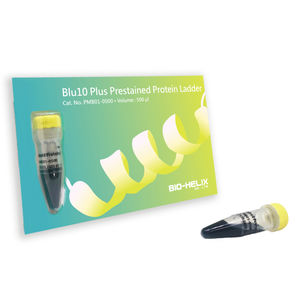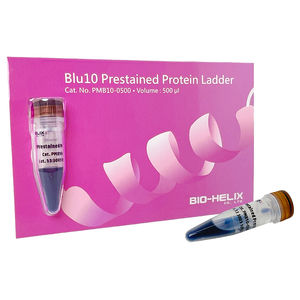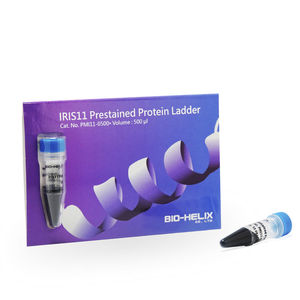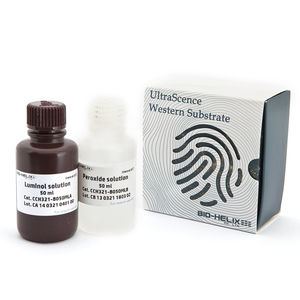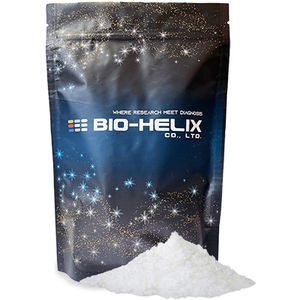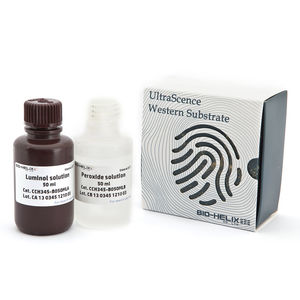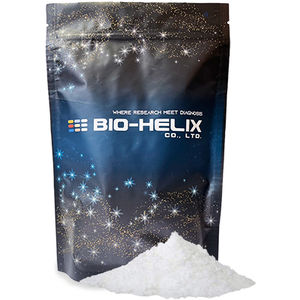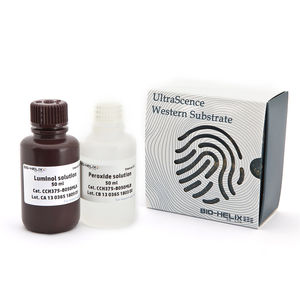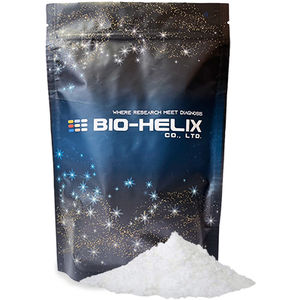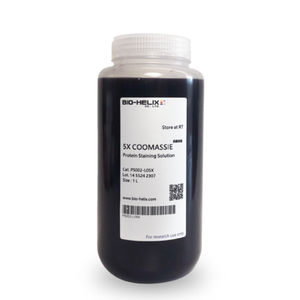
Solution reagent COOMASSIE nanostaining solutiondyeprotein ladder

Add to favorites
Compare this product
Characteristics
- Type
- solution, staining solution, dye, protein ladder
- Tested parameter
- protein, acetic acid
- Storage temperature
25 °C
(77 °F)
Description
COOMASSIE nano, enhanced by nano-technology, is a ready-to-use protein staining solution for SDS-PAGE gels. Its next generation formula offers a faster protein detection, higher sensitivity and there is no need for destaining. Also, the washing step can be omitted. In the absence of hazardous substances such as methanol and acetic acid, COOMASSIE nano is considered to be safe and environmentally friendly. COOMASSIE nano is also compatible with mass spectrophotometry.
Prestained protein ladder, unstain protein ladder, and BSA were prepared and applied in electrophoresis. After running SDS-PAGE (4-20% Novex Gel), please remove the gel from the cassette then proceed to submerge the gel in proper amount of COOMASSIEnano dye, enough to cover the gel. Lightly agitate the staining box for 5 minutes to over night at room temperature.
COOMASSIEnano Protein Staining Solution demonstrates the high sensitivity detection could be down to 10 ng (Lane H). Prestained protein ladder, unstained protein ladder, and serial diluted BSA were prepared and applied in electrophoresis. After running 10% homemade gel (0.75 mm thickness), please remove the gel from the cassette then proceed to submerge the gel in a proper amount of COOMASSIEnano Protein Staining Solution, enough to cover the gel. Lightly agitate the staining container at room temperature when staining for 30 hrs.
VIDEO
Catalogs
Proteomics
6 Pages
Related Searches
- Assay kit
- Solution reagent kit
- Molecular biology reagent kit
- Research reagent kit
- Protein reagent kit
- Diagnostic reagent kit
- Enzyme reagent kit
- Molecular test kit
- Respiratory infection test kit
- Clinical assay kit
- Reagent medium reagent kit
- Dye reagent
- Antibody
- Buffer solution reagent kit
- COVID-19 detection kit
- Quality control reagent kit
- PCR reagent kit
- Bacteria reagent kit
- Nasopharyngeal assay kit
- Staining solution reagent kit
*Prices are pre-tax. They exclude delivery charges and customs duties and do not include additional charges for installation or activation options. Prices are indicative only and may vary by country, with changes to the cost of raw materials and exchange rates.



